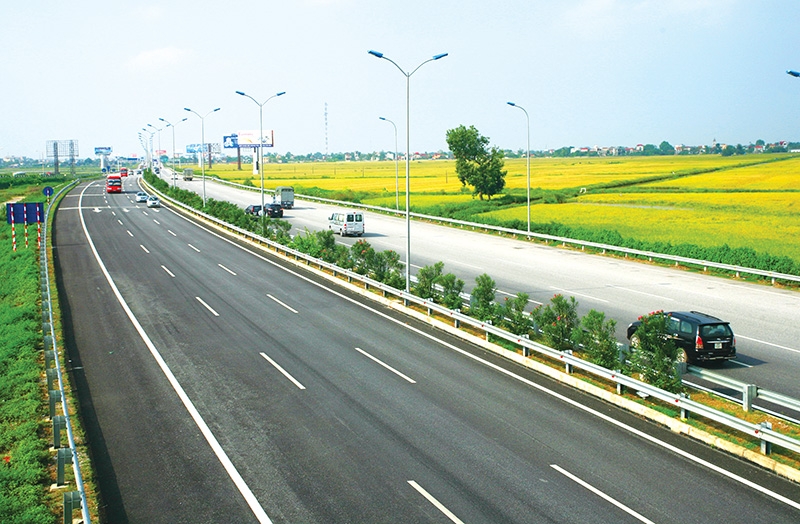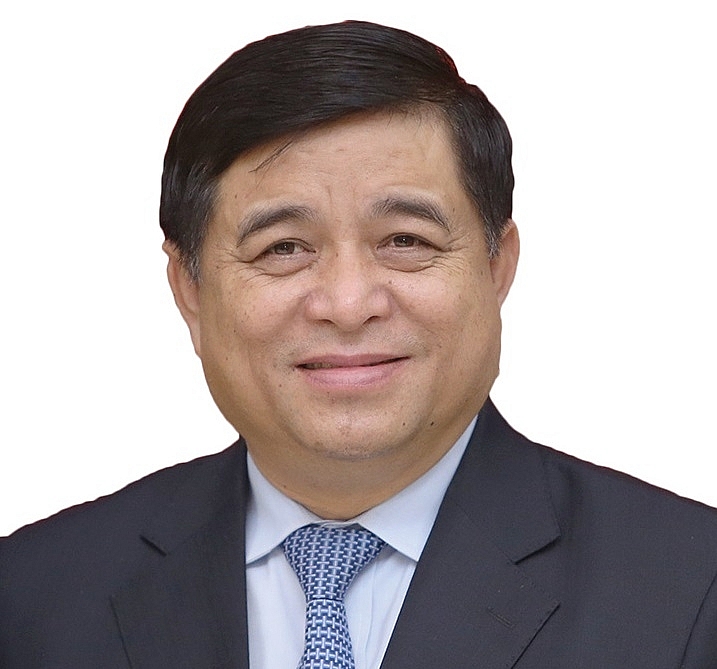Vietnam gathering speed to traverse EVFTA expressway
 |
| The EVFTA is now laying a clear pathway for improvement of everything from sustainable development to social security in Vietnam, Photo: Le Toan |
As soon as the historic EU-Vietnam Free Trade Agreement (EVFTA) took effect on August 1, the government has been pressing ministries, central agencies, and localities to make preparations for enterprises, organisations, and individuals to benefit from the hallmark deal.
One of the biggest moves was last week’s government-led conference on the action plan to carry out the EVFTA, joined by leaders of ministries, all localities, and major enterprises in Vietnam.
“The EVFTA is like an expressway closely connecting the Vietnam and the EU. Vietnam is accepting a new set of more stringent rules in order to lift itself into the higher value and supply chains of the bloc and the wider world,” Prime Minister Nguyen Xuan Phuc stated. “We must change and improve policies. Executing trade cooperation with developed countries and competing with giants in the EU is a good chance for local enterprises and the whole economy to improve and evolve.”
Over the past few years, economist Tran Hoang Ngan has spent a lot of time studying the agreement, which he believes will help Vietnam change its policies in line with international practices.
“The EVFTA will help push the country to boost its reforms and improve competitiveness while creating a fairer investment climate for European investors,” said Ngan, who is also a National Assembly deputy representing Ho Chi Minh City where thousands of foreign businesses are headquartered.
“The introduction of the EVFTA is expected to bring more investors into Vietnam both from Europe and from the rest of the world. As the flow of foreign investment increases, so does the number of commercial grievances. So it is necessary for Vietnam to accelerate the development of a systemic investment response mechanism to settle disputes between investors and the state,” he said.
Meanwhile, chairman of the Vietnam Chamber of Commerce and Industry Vu Tien Loc also likened the EVFTA to a highway on which Vietnam must “pay fees”. “The deal’s entry into force means the opening of the highway, but for the whole economy and enterprises to run smoothly, much remains to be done, including improving the quality of laws,” Loc said. “It is necessary to enact related laws and guiding documents so that the economy and enterprises can benefit from the new deal.”
He suggested that the country bolsters three main pillars – institutional and infrastructural frameworks, as well as human resources – to be ready for the EVFTA and the Comprehensive and Progressive Agreement for Trans-Pacific Partnership.
“Shaking hands with giants will generate a lot of opportunities. However, sustainable development is the only way to enter the EU’s market. Ultimately, the EVFTA’s performance is calculated by the number of firms from both sides that will do business and trade with each other,” said Loc.
The Ministry of Industry and Trade has drafted key contents of the government’s action plan on implementing the EVFTA. The plan defines goals and key tasks, namely information diffusion; law building; improvement of competitiveness and human resources development; policies for trade unions and labourers’ organisations in enterprises; and policies on social security welfare, environmental protection, and sustainable development.
The Vietnamese business community sees numerous prospects in working with EU partners. For example, Le Tien Truong, CEO of Vietnam National Textile and Garment Group confirmed that the EVFTA is a good chance for Vietnam’s textile and garment sector to gain more market share.
In the next five years, the export value is expected to increase by an additional $10 billion to $15-20 billion, from $5.5 billion last year, thanks to the EVFTA. Currently, Vietnam’s textiles and garments occupy 6 per cent of the global market, but capture only 2.2 per cent of the EU’s. However, only 3 per cent of all businesses in this sector have registered a chartered capital higher than VND500 billion ($21.7 million).
“That capital is not enough to produce materials, one of the most important requirements for local businesses to enjoy tariff incentives when exporting to the EU. Thereby, we should lure more foreign-invested projects into this sector and build up some industrial zones specialising in material production and developing supporting industries,” Truong said.
Echoing this view, chairwoman of BRG Group Nguyen Thi Nga proposed the government to support enterprises to develop material areas and guide businesses in terms of the EVFTA’s content, advantages, and conditions.
Nguyen Hoai Nam, deputy general secretary of the Vietnam Association of Seafood Exporters and Producers (VASEP), also said that in 1999 when Vietnam was allowed to export aquatic products into Europe, there were only 19 enterprises and the export value was $129 million. Now, the sum is $1.3 billion, ranking Vietnam the fourth among countries exporting seafood to the EU. “We hope the EVFTA will become the second expressway for seafood enterprises to multiply the exporting value,” asserted Nam.
The EVFTA provides for the almost complete elimination of customs duties between Vietnam and the EU. Some 65 per cent of duties on EU exports to Vietnam will disappear as soon as the FTA enters into force, while the remainder will be phased out gradually over a period of up to 10 years.
Meanwhile, 71 per cent of duties for Vietnamese exports to the EU will disappear upon entry into force, with the remainder being phased out over a period of up to seven years.
| Nguyen Chi Dung - Minister of Planning and Investment
The Ministry of Planning and Investment (MPI) has outlined four groups of solutions for EVFTA implementation. The first increases the organisation of investment promotion programmes and conferences to disseminate Vietnam’s commitment to the business community. The programmes would aim to increase awareness of foreign investors, particularly EU enterprises, about Vietnam’s commitments to open its market and liberalise investment. These events will be based on Resolution 50-NQ/TW on improving the quality and effectiveness of foreign investment cooperation until 2030. Accordingly, Vietnam will focus on attracting investment in the sectors where EU investors have an advantage or a particular strength, or sectors which can connect Vietnam’s supporting industries with global supply chains. The second group of solutions revolves around completing policies and regulations to improve the investment and business environment as well as to ensure that Vietnam’s commitments are met. The MPI has cooperated with the Ministry of Justice and other relevant authorities to check related regulations and propose adding new ones where it is necessary. Currently, almost all EVFTA commitments relating to state management suit existing regulations. The third group of solutions is to rapidly implement plans to improve the competitivenesss of the economy. The MPI submitted to the prime minister the national programme about supporting small- and medium-sized enterprises, startups, and innovations to join global value chains for approval. In addition, the MPI will accelerate taking the National Innovation Centre into operation to support such enterprises. Lastly, the MPI will build and complete policies to prevent disputes between the state and investors. Notably, it is necessary to accompany the latter after they implement their projects to deal with arising difficulties and problems to avoid disputes. |
What the stars mean:
★ Poor ★ ★ Promising ★★★ Good ★★★★ Very good ★★★★★ Exceptional
Themes: EVFTA & EVIPA
Related Contents
Latest News
More News
- Driving double-digit growth through green and circular transformation in Vietnam (December 17, 2025 | 09:00)
- Vietnam bucking trend in the global M&A landscape (December 16, 2025 | 14:20)
- Vietnam’s green transition demands collective financial action (December 15, 2025 | 12:00)
- VIR workshop highlights capital and policy for sustainable development (December 15, 2025 | 11:00)
- National Assembly approves pilot mechanisms to accelerate major projects in Hanoi (December 12, 2025 | 11:29)
- Vietnam eases policy approval requirements, simplifies foreign and outbound investments (December 11, 2025 | 17:53)
- Unpacking new momentum in Vietnam’s M&A market (December 10, 2025 | 09:59)
- Forum honours outstanding M&A deals, strategies, and advisory firms (December 09, 2025 | 18:22)
- Vietnam enters defining phase of M&A growth (December 09, 2025 | 17:00)
- Vietnam’s M&A market opens new opportunities amid strong economic momentum (December 09, 2025 | 15:00)


 Tag:
Tag:






















 Mobile Version
Mobile Version